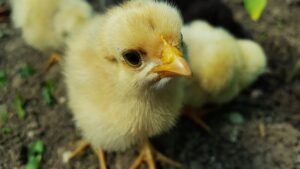Raising baby chicks can be one of the most rewarding experiences—you’re essentially welcoming fluffy little bundles of potential into your life, each with the promise of fresh eggs down the line. Whether you’re a first-time chick owner, an animal enthusiast, or a homesteader, this guide will help you start your chick-raising adventure on the right foot (or should I say, claw?).
Choosing the Right Breed for Your Environment and Purpose
Not all chicks are created equal. Some are better suited for laying eggs, others for meat, and a few breeds can charm the socks off anyone with their delightful personalities. Do you have space for chickens to roam, or are you working with a smaller urban backyard? Researching different breeds will help you match your flock to your environment and goals.
Here’s a quick tip—if you want friendly birds that lay plenty of eggs, consider breeds like the Rhode Island Red or the Buff Orpington. On the other hand, if you’re looking for dual-purpose birds, the Plymouth Rock might be your new best friend.
Hatching Eggs vs Buying Chicks
Now that you have an idea of the breed(s) you want, it’s time to decide whether you want to hatch eggs or buy chicks. Hatching your own eggs can be a fascinating experience and allows you to control the genetics of your flock. Plus, watching those fluffy little creatures break out of their shells is truly magical. However, hatching requires specialized equipment and knowledge, so if it’s your first time raising chicks, it might be better to start with buying day-old chicks from a reputable hatchery.
Preparing a Cozy Home for the New Arrivals
Before those fluffy friends arrive, you’ll need to set up a brooder—a safe, warm space where they can thrive during their early days. Think of it as your chicks’ starter apartment, complete with heating (a heat lamp), bedding (pine shavings work great), and security (make sure it’s predator-proof).
The temperature in the brooder should start at around 95°F and decrease by 5°F each week until they are fully feathered. You’ll want to keep a thermometer handy, as overheating can be as detrimental as leaving them in the cold.
To sum it up you need:
- A Brooder: This is their temporary home for the first few weeks, where they will stay warm and safe. You can make your own brooder or purchase one from a farm supply store.
- Bedding: Pine shavings are a popular choice as they are absorbent and help control odor.
- Heat Source: Chicks need to be kept at a constant temperature of 95°F during their first week and then gradually decreased by five degrees each week until they reach their regular room temperature.
- Food and Water Containers: Small feeders and waterers specifically designed for chicks are recommended to keep their food and water clean.
- Chick Feed: A high-quality starter chick feed with at least 20% protein will provide
Feeding and Watering Guidelines for Healthy Growth
What’s on the menu for your chicks? A specially formulated chick starter feed is a must, as it provides all the nutrients they need to grow strong. Fresh, clean water should always be available—chicks may not be the brightest creatures, but they have a knack for tipping over their water dish, so check it regularly.
You also may need to actually put them by their water source and dip their beaks in it. It’s important they drink something right away. You can find waterers and feeders sized for chicks.
Remember, treats are for later! Avoid feeding them kitchen scraps or adult chicken food until they’re older and can handle it.
Daily Care and Health Checks to Ensure Your Chicks Thrive
Chicks are pretty self-sufficient, but they still need some TLC. Daily care involves checking on their food and water, cleaning the brooder, and watching for any signs of distress or illness. Healthy chicks are active, curious, and have bright eyes and fluffy, clean feathers.
Keep an eye out for “pasty butt”—a condition where droppings stick to their behinds and can block the vent. It’s easy to remedy with a gentle cleaning, but it’s vital for their health.
The Transition from Brooder to Coop: What You Need to Know
Once your chicks are fully feathered and temperatures are consistently above 70°F, they’re ready to graduate from the brooder to the coop. This move is akin to sending them off to college—they’re growing up! Make sure they have plenty of space and ventilation in their new coop, along with secure fencing to keep them safe from predators.
Introduce them gradually by allowing short supervised visits to the coop before making it their full-time home. It’s a brave new world out there, after all.
Possible Problems Introducing to Adult Flock.
Introducing your chicks to an existing flock can be a bit tricky, as adult chickens may see them as intruders and potentially harm them. To avoid any potential conflicts, it’s best to wait until your chicks are fully grown before introducing them to the rest of the flock.
When you do introduce them, make sure they have enough space to escape if needed and keep a watchful eye for any aggressive behavior. It’s also helpful to provide multiple feeding and watering stations to prevent competition among the birds.
If you notice any signs of bullying or aggression, separate the chicks from the rest of the flock until they are better able to defend themselves.
Conclusion: Embracing the Journey of Raising Happy, Healthy Chickens
Raising baby chicks isn’t just about the eggs or the meat—it’s about the joy of watching them grow, the satisfaction of nurturing them, and the connection you build with these quirky, delightful creatures. Whether you’re in it for sustainability, the love of animals, or simply a new hobby, raising chickens is a rewarding experience with plenty of opportunities for laughter and learning.
Ready to start your own chicken-raising adventure? Share your first steps in the comments below, or feel free to ask questions—we’re here to help you every step of the way on this egg-citing journey!
For more on chicken care:
Chicken Foraging and Free Ranging
Best Chicken Breeds for Egg Laying

